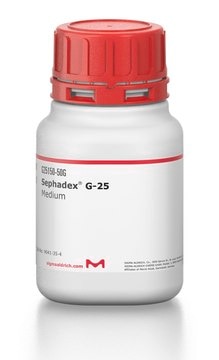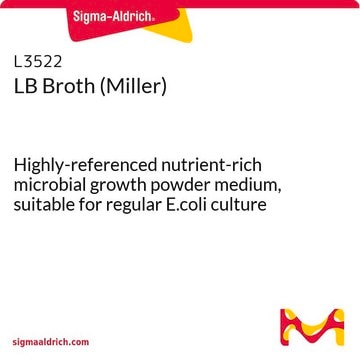154792
Dichloromethane
ACS spectrophotometric grade, ≥99.5%, contains 50-150 ppm amylene as stabilizer
Synonym(s):
Methylene chloride
About This Item
Recommended Products
grade
ACS spectrophotometric grade
vapor density
2.9 (vs air)
vapor pressure
24.45 psi ( 55 °C)
6.83 psi ( 20 °C)
assay
≥99.5%
form
liquid
autoignition temp.
1223 °F
contains
50-150 ppm amylene as stabilizer
expl. lim.
22 %
technique(s)
UV/Vis spectroscopy: suitable
impurities
≤0.0003 meq/g Titr. acid
≤0.02% water
evapn. residue
≤0.002%
color
APHA: ≤10
clear
refractive index
n20/D 1.424 (lit.)
bp
39.8-40 °C (lit.)
mp
−95 °C (lit.)
density
1.325 g/mL at 25 °C (lit.)
λ
H2O reference
UV absorption
λ: 235 nm Amax: 1.0
λ: 240 nm Amax: 0.35
λ: 250 nm Amax: 0.10
λ: 260 nm Amax: 0.04
λ: 340-400 nm Amax: 0.01
SMILES string
ClCCl
InChI
1S/CH2Cl2/c2-1-3/h1H2
InChI key
YMWUJEATGCHHMB-UHFFFAOYSA-N
Looking for similar products? Visit Product Comparison Guide
Preparation Note
Other Notes
All -D packages are 100% the same product, same quality, same specification as the package sizes previously sold without a -D.
signalword
Warning
hcodes
Hazard Classifications
Carc. 2 - Eye Irrit. 2 - Skin Irrit. 2 - STOT SE 3
target_organs
Central nervous system
Storage Class
6.1D - Non-combustible acute toxic Cat.3 / toxic hazardous materials or hazardous materials causing chronic effects
wgk_germany
WGK 2
flash_point_f
does not flash
flash_point_c
does not flash
ppe
Eyeshields, Faceshields, Gloves
Choose from one of the most recent versions:
Already Own This Product?
Find documentation for the products that you have recently purchased in the Document Library.
Customers Also Viewed
Active Filters
Our team of scientists has experience in all areas of research including Life Science, Material Science, Chemical Synthesis, Chromatography, Analytical and many others.
Contact Technical Service












